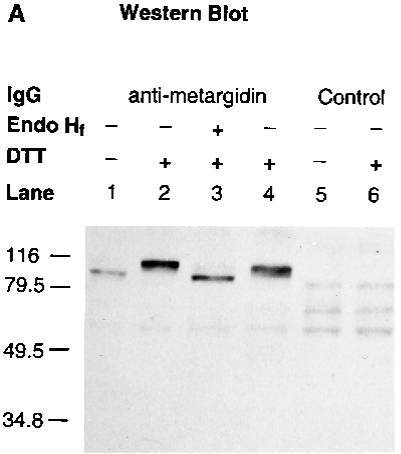Cat. #152532
Anti-ADAM15 [15HUCYT]
Cat. #: 152532
Sub-type: Primary antibody
Unit size: 100 ug
Availability: 10-12 weeks
Target: ADAM15
Class: Polyclonal
Application: WB
Reactivity: Human
Host: Rabbit
£300.00
This fee is applicable only for non-profit organisations. If you are a for-profit organisation or a researcher working on commercially-sponsored academic research, you will need to contact our licensing team for a commercial use license.
Contributor
Inventor: Carl Blobel
Institute: Hospital for Special Surgery
Tool Details
*FOR RESEARCH USE ONLY (for other uses, please contact the licensing team)
- Name: Anti-ADAM15 [15HUCYT]
- Research fields: Cancer;Cell biology;Cell signaling and signal transduction
- Clone: 15HUCYT
- Tool sub type: Primary antibody
- Class: Polyclonal
- Conjugation: Unconjugated
- Molecular weight: ~110 kDa under reducing conditions
- Reactivity: Human
- Host: Rabbit
- Application: WB
- Description: ADAM15 is an active metalloproteinase with gelatinolytic and collagenolytic activity which plays a role in the wound healing process. ADAM family members are type I transmembrane glycoproteins known to be involved in cell adhesion and proteolytic ectodomain processing of cytokines and adhesion molecules.
- Immunogen: GST-cyto corresponding to the cytoplasmic domain of human ADAM15
Target Details
- Target: ADAM15
- Molecular weight: ~110 kDa under reducing conditions
- Target background: ADAM15 is an active metalloproteinase with gelatinolytic and collagenolytic activity which plays a role in the wound healing process. ADAM family members are type I transmembrane glycoproteins known to be involved in cell adhesion and proteolytic ectodomain processing of cytokines and adhesion molecules.
Applications
- Application: WB
Handling
- Format: Liquid
- Concentration: 0.9-1.1 mg/ml
- Unit size: 100 ug
- Storage buffer: Whole serum
- Storage conditions: -15° C to -25° C
- Shipping conditions: Dry ice
References
- KrĤtzschmar et al. 1996. J Biol Chem. 271(9):4593-6. PMID: 8617717.



